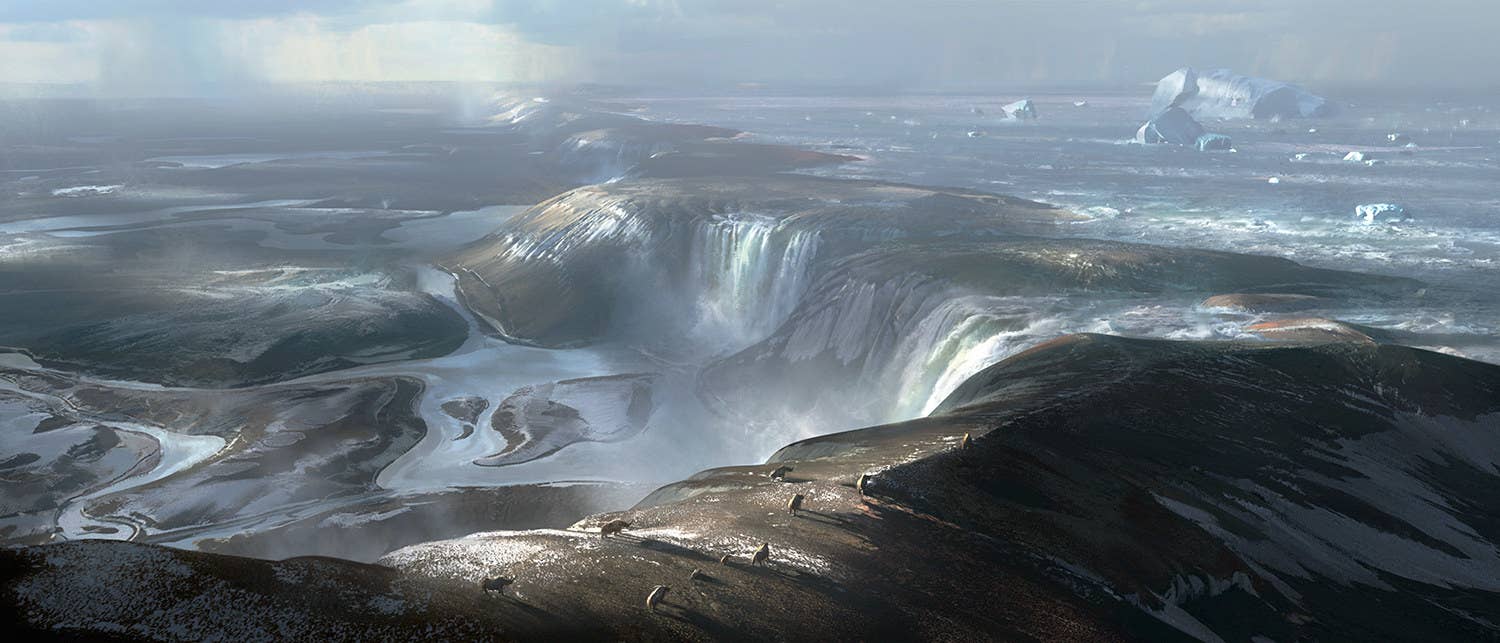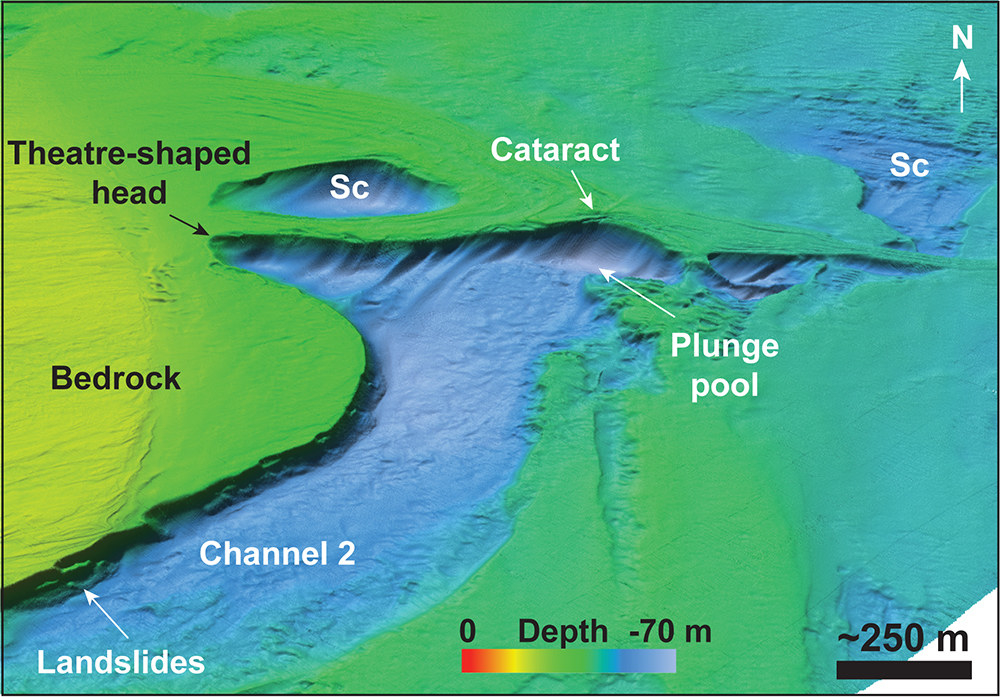This is (probably) what it looked like when Britain was first separated from mainland Europe.

A study out today in Nature Communications sheds new light on how Britain became an island. Researchers at Imperial College London have found huge holes in the bottom of the Dover Strait, the narrowest part of the English Channel, which they say were carved out by a vast waterfall around 450,000 years ago.
The waterfall was the result of a breach in a rock wall that separated a vast freshwater glacial lake in what is now the southern North Sea from what is now the English Channel.
Scientists have been discussing exactly how Britain became an island for at least 20 years. In "interglacial" periods between ice ages, such as now, sea levels are high enough to fill the Dover Strait and cut it off from the mainland. In ice ages, the sea level drops, and the English Channel becomes a land bridge.

But until around 450,000 years ago, the two were linked even in interglacial periods. Scientists think this is because there was a high chalk ridge along the line of the Dover Strait. North of the ridge was an enormous freshwater lake, high above sea level.
At some point the ridge must have been breached, causing the lake to flow into the sea below. But there has been debate over whether the event was sudden and catastrophic, or slow and sedate.
In the new study scientists carried out sonar scans of the bottom of the Dover Strait, and found evidence of great holes in the sea floor. "They're about 100 metres deep into solid bedrock," Dr Jenny Collier, one of the authors of the study, told BuzzFeed News. "We're interpreting it as being waterfalls in a rock ridge, and the first stage of a catastrophic failure at the Strait of Dover." It would have had to be catastrophic, she says, to have carved a hole like that.

The breach was probably caused by the lake overfilling as European rivers and water from a slowly melting glacier at the north of the lake poured into it, says Collier. The sonar scans also found evidence of ancient valleys cross-cutting the plunge pools, suggesting that the breach 450,000 years ago had not completely severed the link between Kent and France, and that the final separation had come later.
Exactly how rapidly the flooding took place isn't clear – Collier says it may have taken as long as a decade for the the lake to drain. "To carve a hole like that, I’d say 10 years, not one season," she said. "Even coming off a precipice like that."
But the initial breach of the dam may have happened extraordinarily quickly. Dr Tori Herridge, a palaeobiologist at the Natural History Museum, pointed BuzzFeed News towards footage of a similar, but far smaller, "proglacial lake" bursting in Iceland. "It's properly scary stuff," she said.
"It must have looked amazing," says Herridge. "They're saying there was this breach of the rock ridge, a huge waterfall cascading over it. A waterfall eating into the chalk ridge, a megaflood on a scale never seen before on Earth – a lake so huge you couldn't see across it, a flood of unimaginable proportions, ridiculous amounts of water. It's comparable to the flood valleys you see carved out on the surface of Mars.
"Previously there'd been two schools of thought. One said that there was a single mega-flood which carved out the English Channel; the other thought it was more nuanced, that there wasn't a sudden event that suddenly made Britain an island 450,000 years ago."

She said evidence such as the fact that the species of molluscs in the North Sea and English Channel remained distinct until about 160,000 years ago hinted that the separation had lasted longer. "This research shows that the two-stage hypothesis seems to be the right one."
There probably wouldn't have been humans living in Britain at the time of the breach 450,000 years ago, says Dr Martin Bates, a geoarchaeologist at University of Wales Trinity St David. There had been hominids – ancestors of modern humans – there before, but in the ice ages it became too inhospitable: "We have good evidence for humans in the interglacial before this," he told BuzzFeed News, "and humans in the subsequent interglacial, but we don’t have good evidence for hominid presence at the time." So there wouldn't have been panicked people fleeing the flood.
But, says Herridge, the fact that they returned afterwards is good evidence that the severance wasn't complete. "The warm stage following the ice age 160,000 years ago completely lacked humans in Britain," she said. "You see hippos in the Thames, but no humans. Every other warm period [after the arrival of hominids in Europe] had some kind of ancient humans there. After the 450,000-years-ago event, you do see them." That suggests that they were still able to make the crossing relatively easily, she says.

